“What can be shown cannot be said.”
- Ludwig Wittgenstein
Stating that what can be depicted cannot be retold, Ludwig Wittgenstein highlights visual arts’ role in displaying stories. Transposing ideas through images leaves space for individual understanding and imagination to interpret truths, instead of abiding by precisely carved spoken or written words. Sharing stories through visual representation has been a practice as ancient as human kind: the earliest traces of human-made art suggest that images have been used since prehistoric times to convey stories, ideas and emotions.

Before written communication was invented, narratives were shaped by geographical and cultural particularities: even after the emergence of literacy around the world, stories were told and ideas shared through paintings and images. Looking at Western Europe’s art history, the Renaissance for example allowed for the development of narrative art’s most relevant form: history painting. In the Arab world however, storytelling was a major oral tradition. Information was verbally passed on from one generation to the next, morphing Hi(story) into half-truths, and turning fiction into facts.

Storytelling through art started to fade over time and had almost disappeared in the 20th century… Until recent decades, which have witnessed a resurgence of storytelling through the work of many contemporary artists. This is especially true across the African continent, where William Kentridge, widely acknowledged as a major narrative artist, nonetheless leaves a grey area where the visitor is left wondering whether it was actually the story that the artist wanted to convey, or if it was the storytelling that was of primary interest. While Kentridge's artworks can spark a debate on the subject, young Mozambican artist Cassi Namoda is fully committed to narration: "What is it that I am trying to convey and what will my viewer and I walk away with? It is storytelling, really."

Immediate, unfiltered truths, historical facts intertwined with personal experiences, and testimonies that use the forms of figurative art: contemporary storytelling is a reaction to socio-political and geographical realities, often linked to questions of oppression, colonialism, racism, feminism, origin and identity.
Andrée Sfeir-Semler in conversation with Bettina Steinbrügge
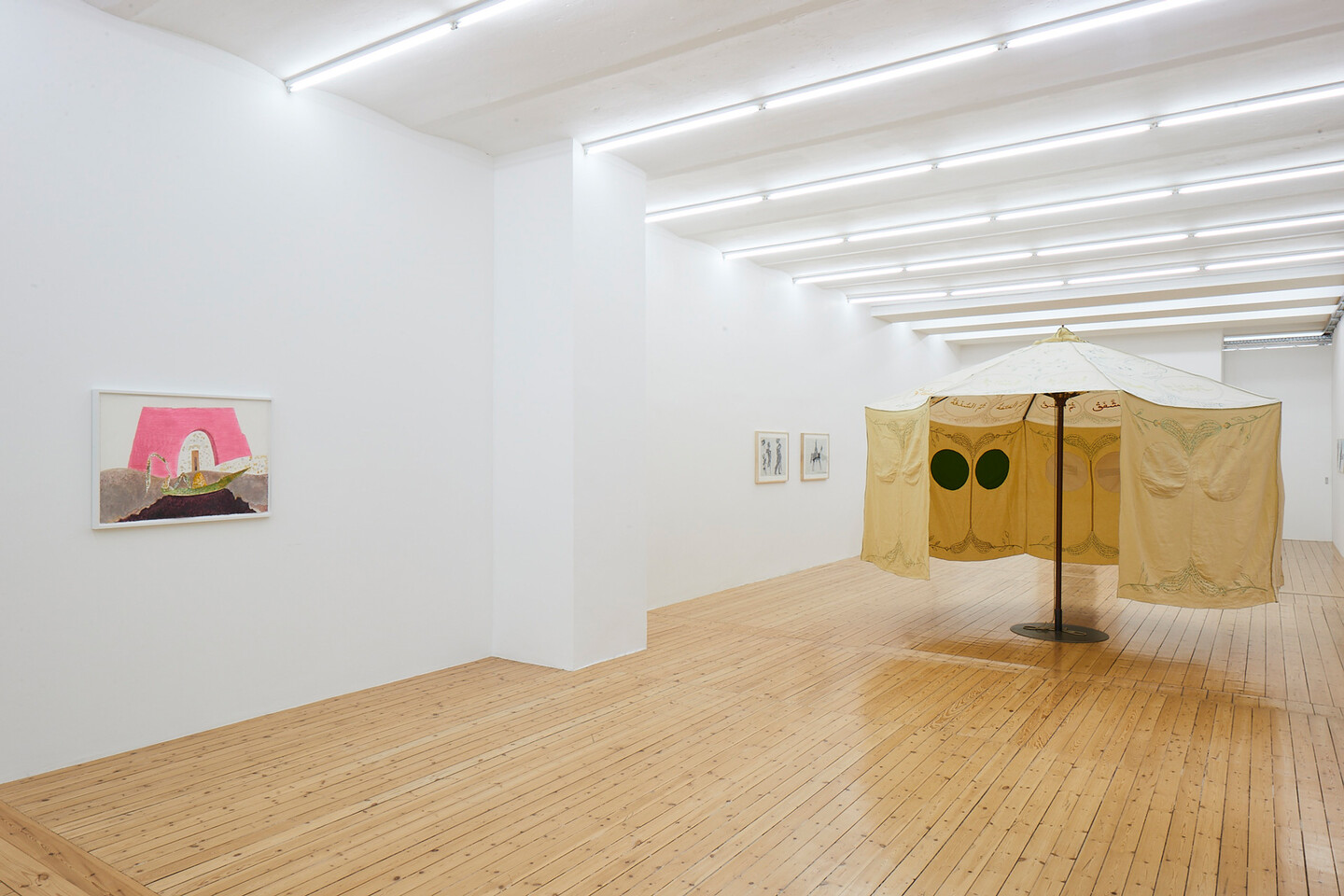
FARAH AL QASIMI
Working primarily with photography, video, and performance, Farah Al Qasimi (b.1991, Abu Dhabi) explores postcolonial structures of power, gender, and taste in the Arab Gulf States. She studied photography and music at Yale University in 2012 and received her MFA from the Yale School of Art in 2017. Farah lives and works between New York and Dubai. She is currently a critic at the Rhode Island School of Design.
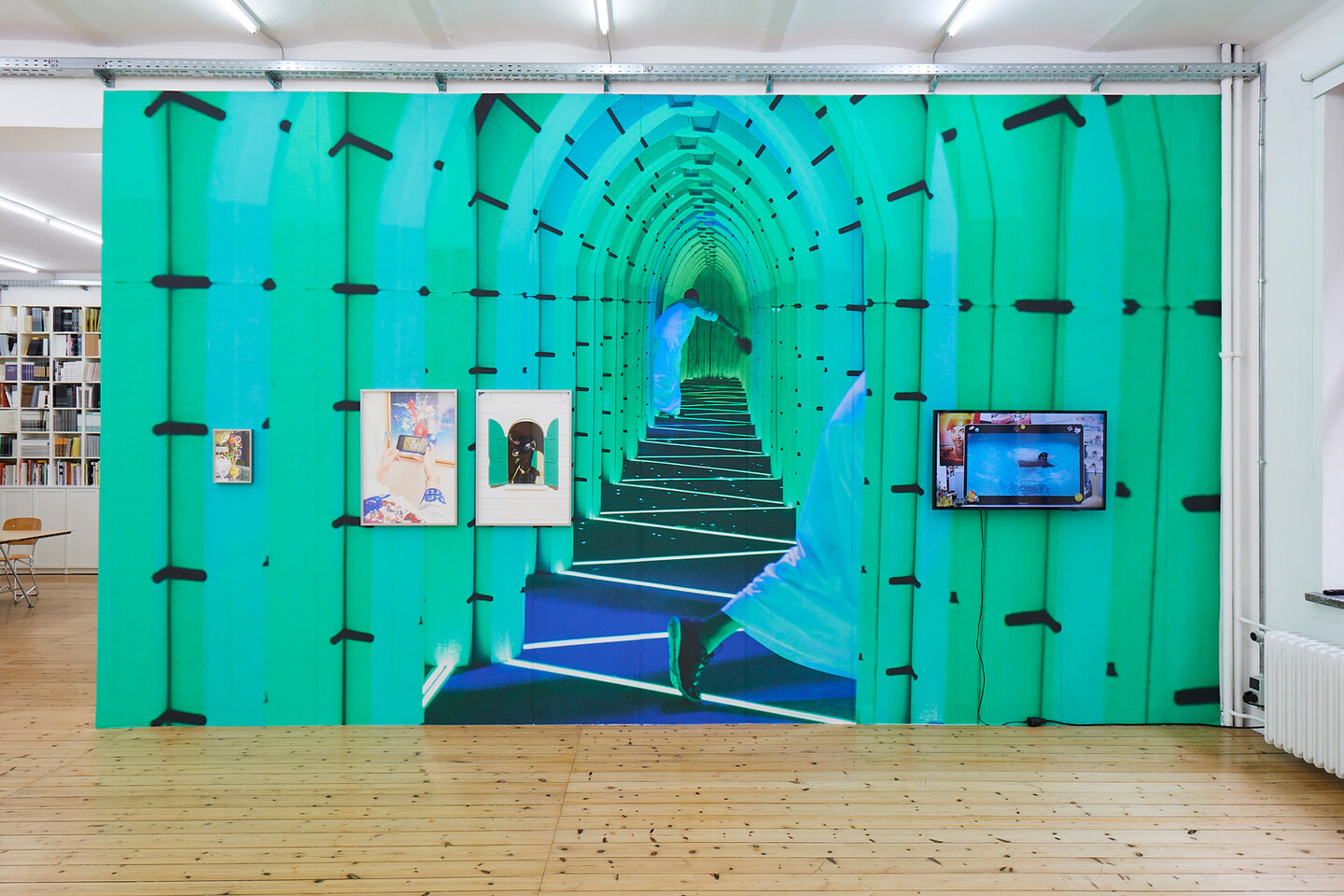
wallpaper, Inkjet prints, video, various dimensions


MOUNIRA AL SOLH
Mounira Al Solh (b.1978, Lebanon) studied painting at the Lebanese University, Beirut from 1997 to 2001, and Fine Arts at the Gerrit Rietveld Academy, Amsterdam from 2003 to 2006. She was also Research Resident at the Rijksakademie, Amsterdam in 2007 and 2008. Irony and self-reflectivity are central strategies for her work, which explores feminist issues, tracks patterns of micro-history, is socially engaged, and can be political and escapist all at once.

parasol, embroidered tent, 350 × 350 cm
For years, the artist has been gathering stories told by women involving women’s liberation and defying systems of oppression. The tents produced under the series Mina El Shourouk ila Al Fahmah (which loosely translates as From Dawn till Dusk) are assembled to create a secluded space, recording these stories embroidered onto the inner fabric walls. The stories talk of women of all ages, powerful known figures from Islamic history or strong women the artist encountered, in both English and Arabic.
The idea of creating a tent stems from canopies under which rulers would sit in ancient times: a sign of power, these structures made with richly decorated fabric, usually had ruling men sitting under them.
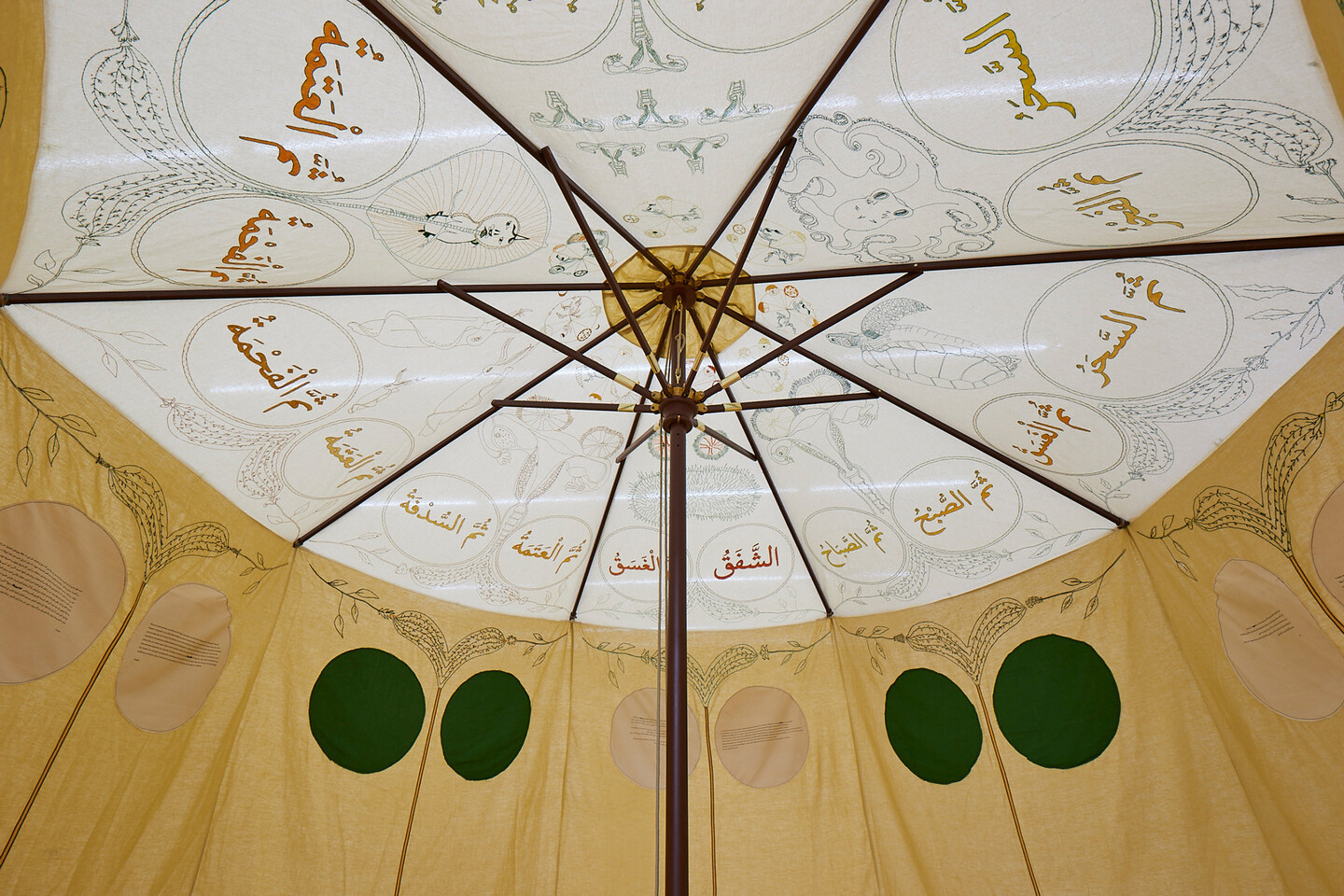

This tent is one of three existing ones from the ongoing series. Each tent has distinct features with embroidered drawings that relate to one of the stories from its inside panels. In the case of this yellow tent, marine animals are sewn on the top part of the tent, relating to the story of a women, mistreated by her husband, who found refuge with her daughter in a house on the sea front. Another tent from the series is made with red fabric and includes animals from the forest, because of the story of a girl who sneaked into her father’s van to go camping with him and her brothers and discovered a place she was never allowed to experience. The third tent is currently a work in progress, and will be made with blue fabric.
On both existing tents, growing plants and leaves are intertwined with the illustrated animals, along with female body parts - which are still taboo in many societies - accentuating the reflection on passing time, and the relationship of women to aging.
The Arabic calligraphy embroidered on each triangle of the yellow tents represent the 12 Arabic names for each hour of the night. Giving a sense of rhythm to the tent, the artist intended those repeating hours as a reminder of the continuous and constant struggle of women for equality. The tent is accompanied by a recording of the voice or Rima Khcheich: the sound piece fills the space while the reader recites the 12 names of the hours of the day and the 12 names of the hours of the night in Arabic.

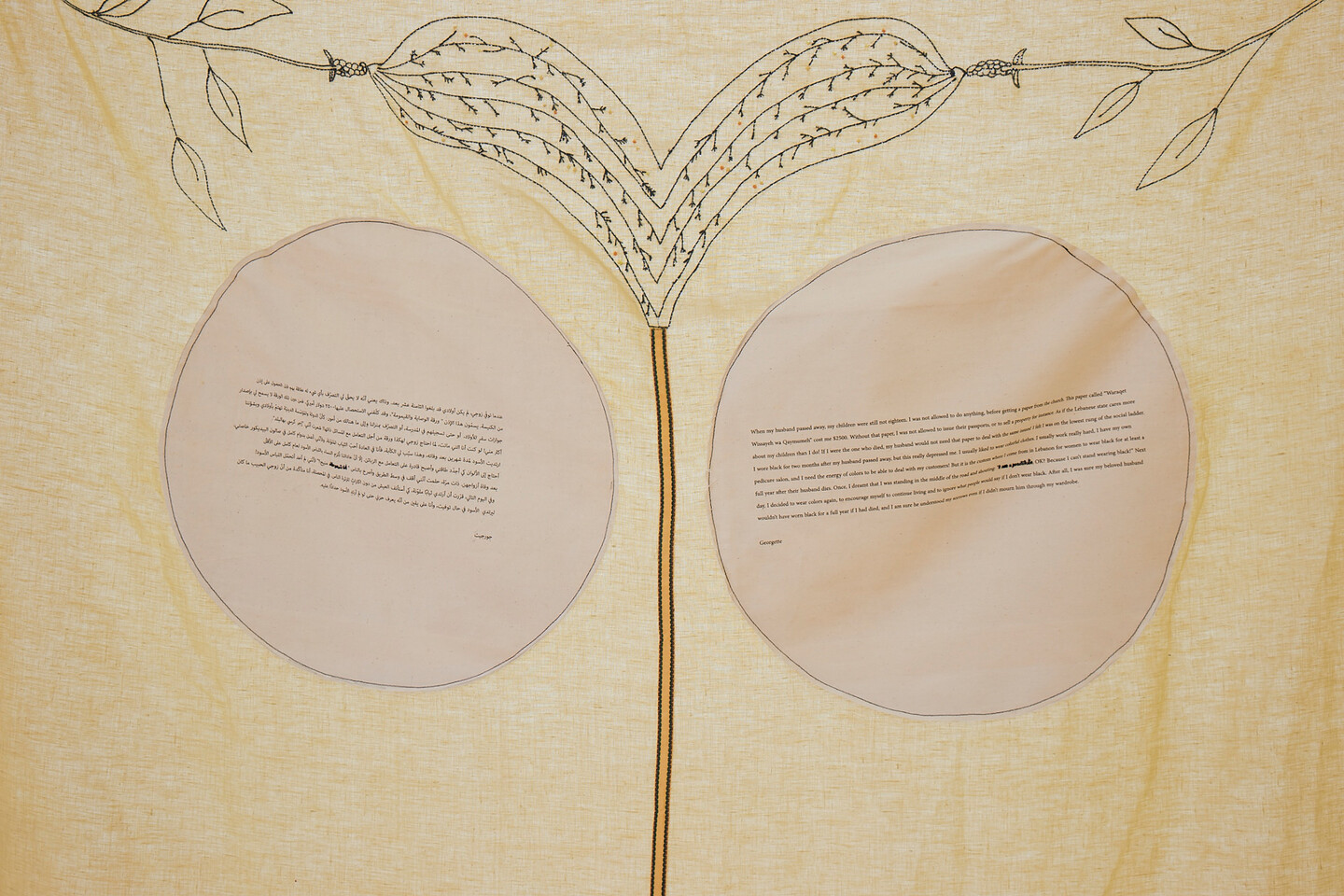
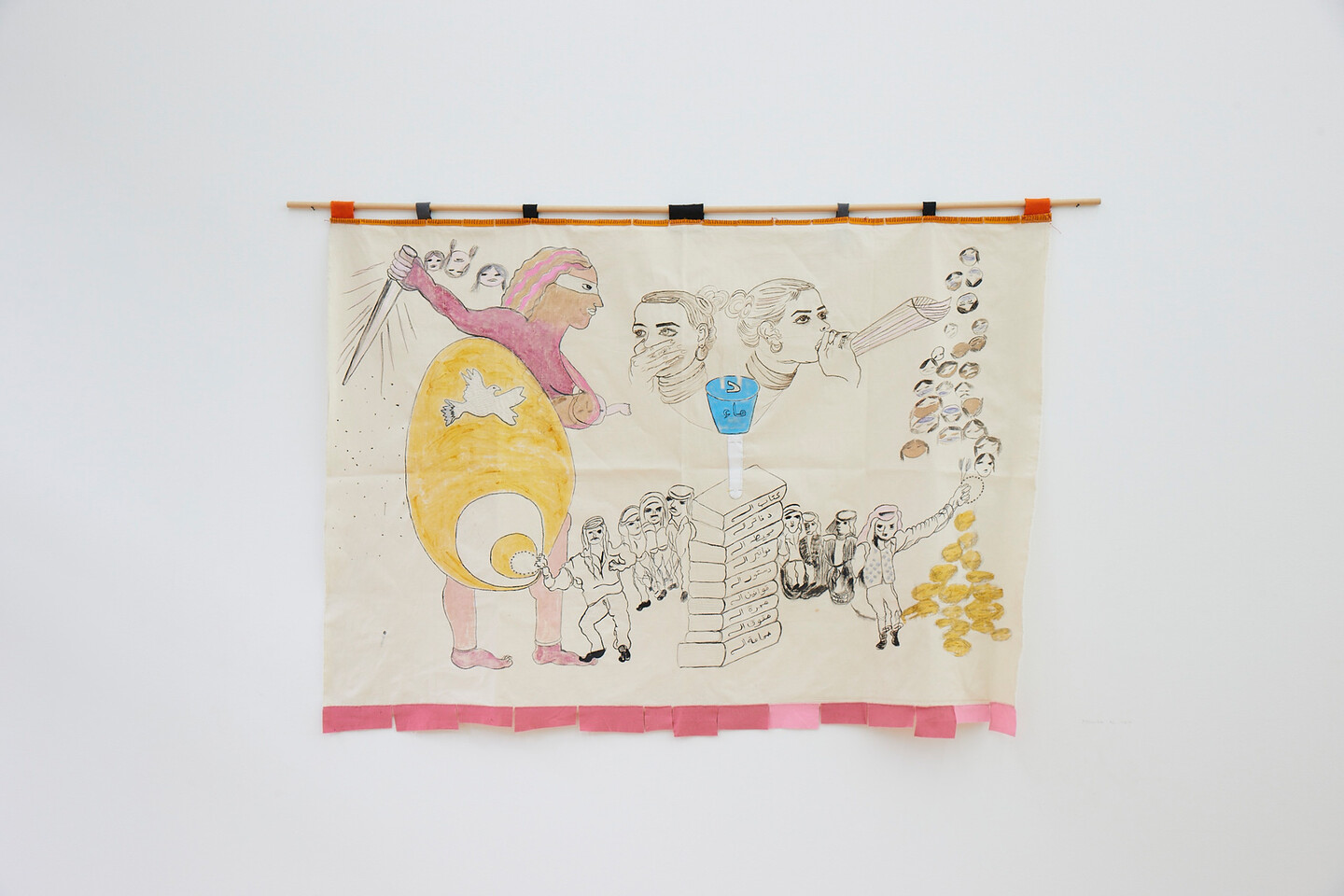
gouache, ink, natural pigments and embroidery on textile, 115 × 157 cm
WILLIAM KENTRIDGE
William Kentridge was born in 1955 in Johannesburg, South Africa, where he currently lives and works. His work, often based on the socio-political conditions in post-apartheid South Africa, takes an expressionist form. For Kentridge, the process of recording history is constructed from reconfigured fragments to arrive at a provisional understanding of the past - this act of recording, disassembling, and reordering transitions into an essential activity of the studio.
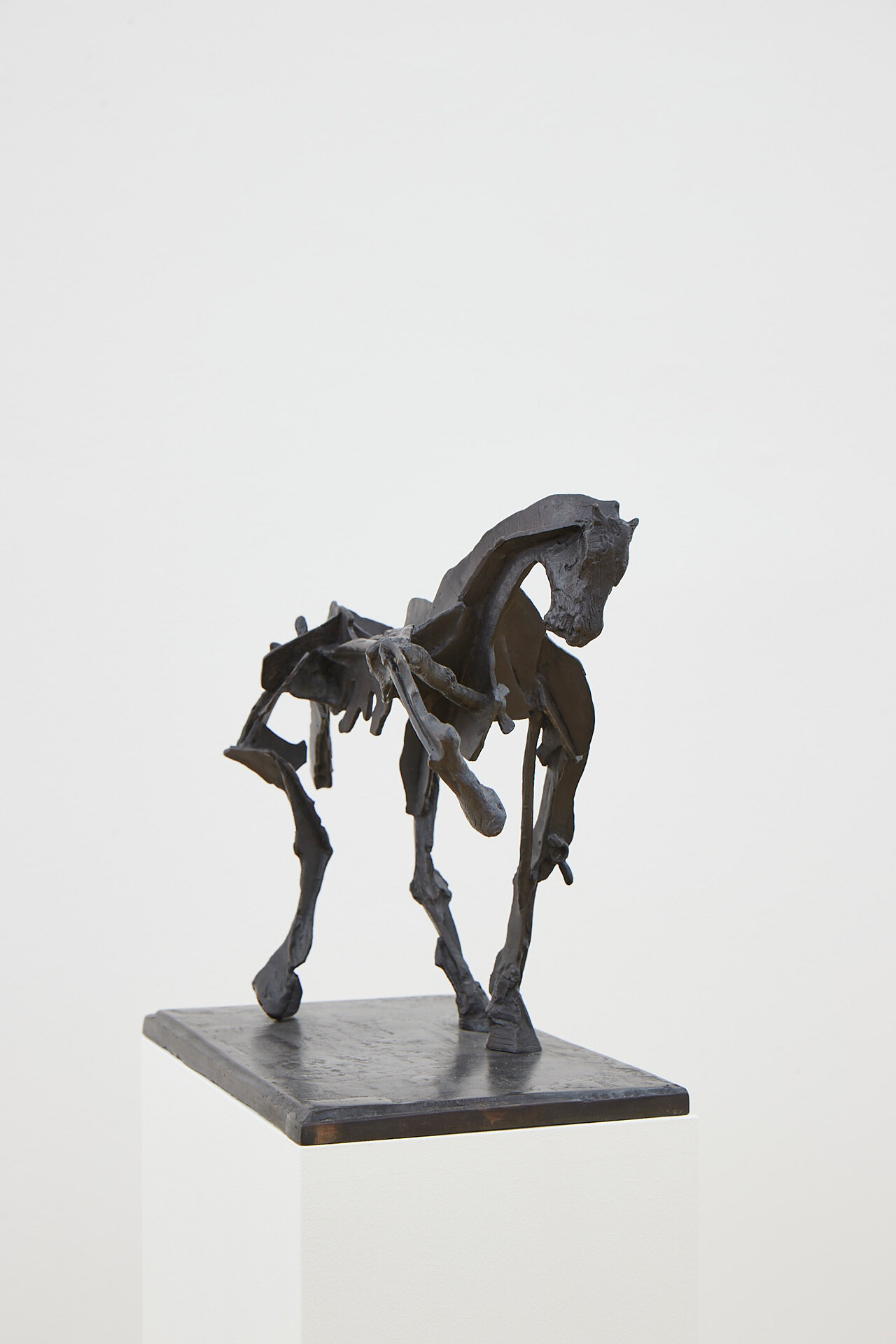
bronze, 32 × 48 × 20 cm
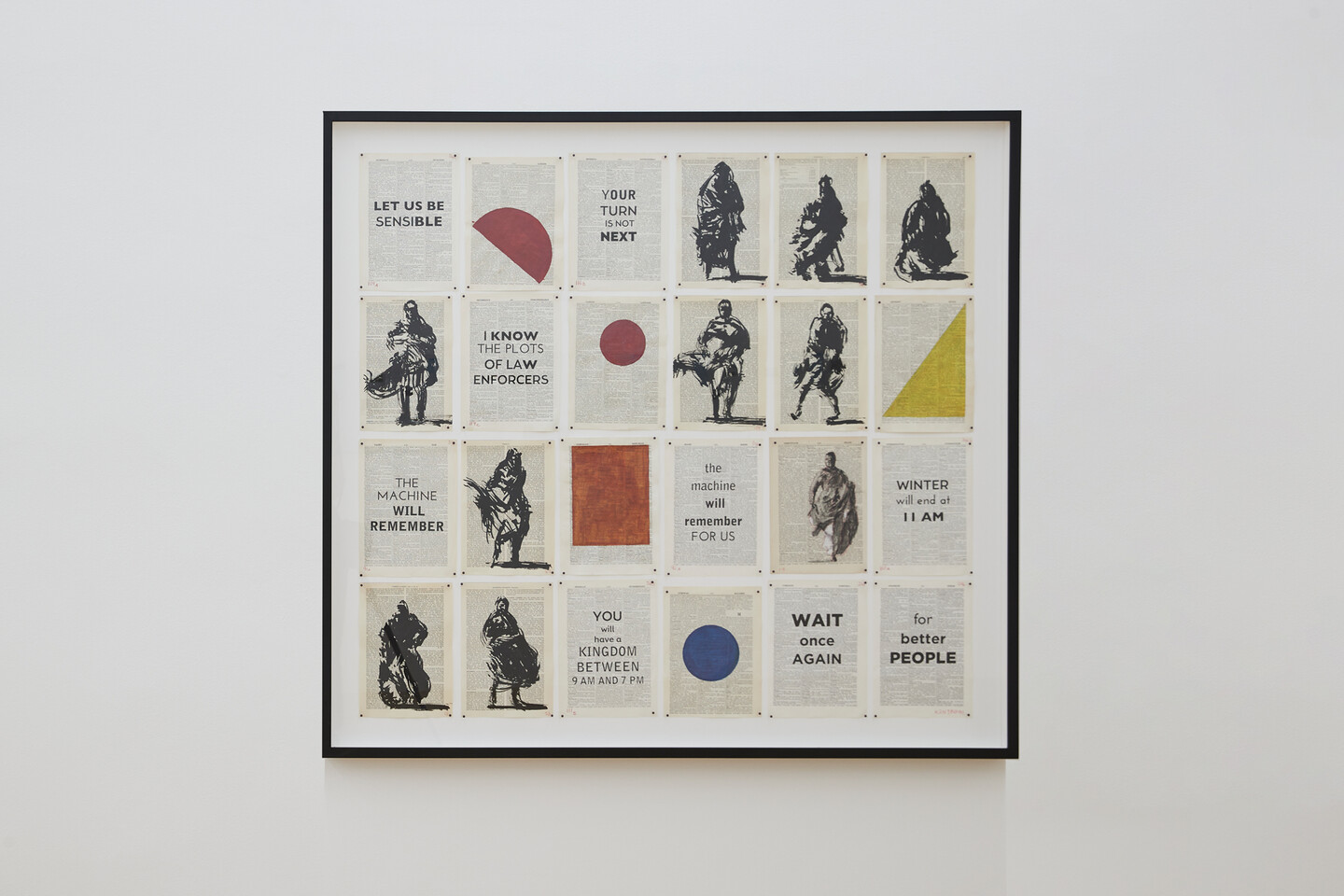
indian ink, pencil and charcoal drawings on found pages, 112 × 121 cm
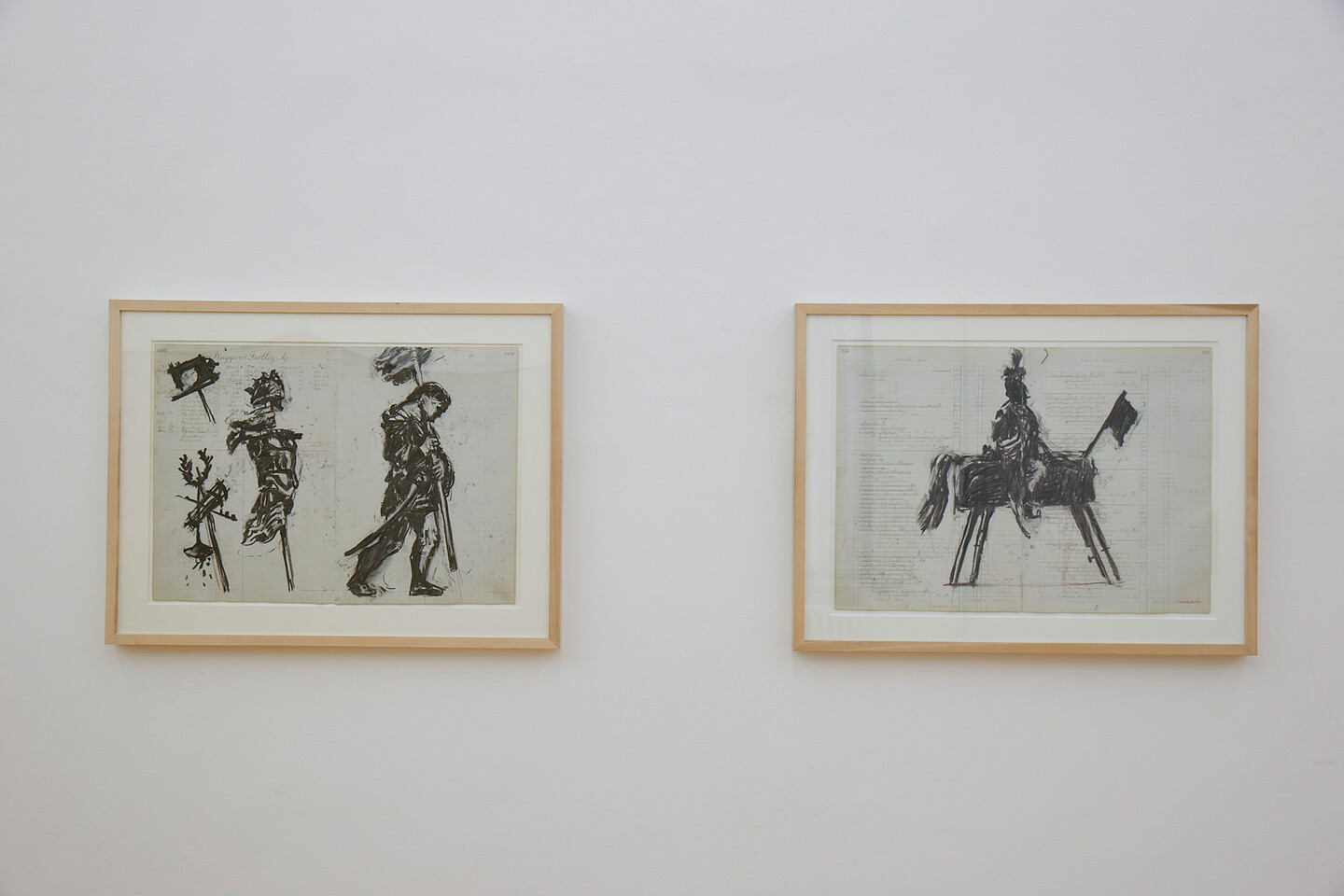
DADA KHANYISA
Dada Khanyisa was born in 1991 in Umzimkhulu, KwaZulu-Natal. In 2016 they completed a BAFA at the Michaelis School of Fine Art, University of Cape Town. In 2017, they were commissioned to produce a 35-metre mural painting at Constitution Hill in Johannesburg as a way to give the historic site contemporary appeal. Khanyisa won the Simon Gerson Prize at UCT in 2016. As a merit winner at the SA Taxi Art Awards in 2015, their work featured on 10 taxis traversing the main roads of South Africa. They participated in a Fountainhead residency in Miami in 2018.
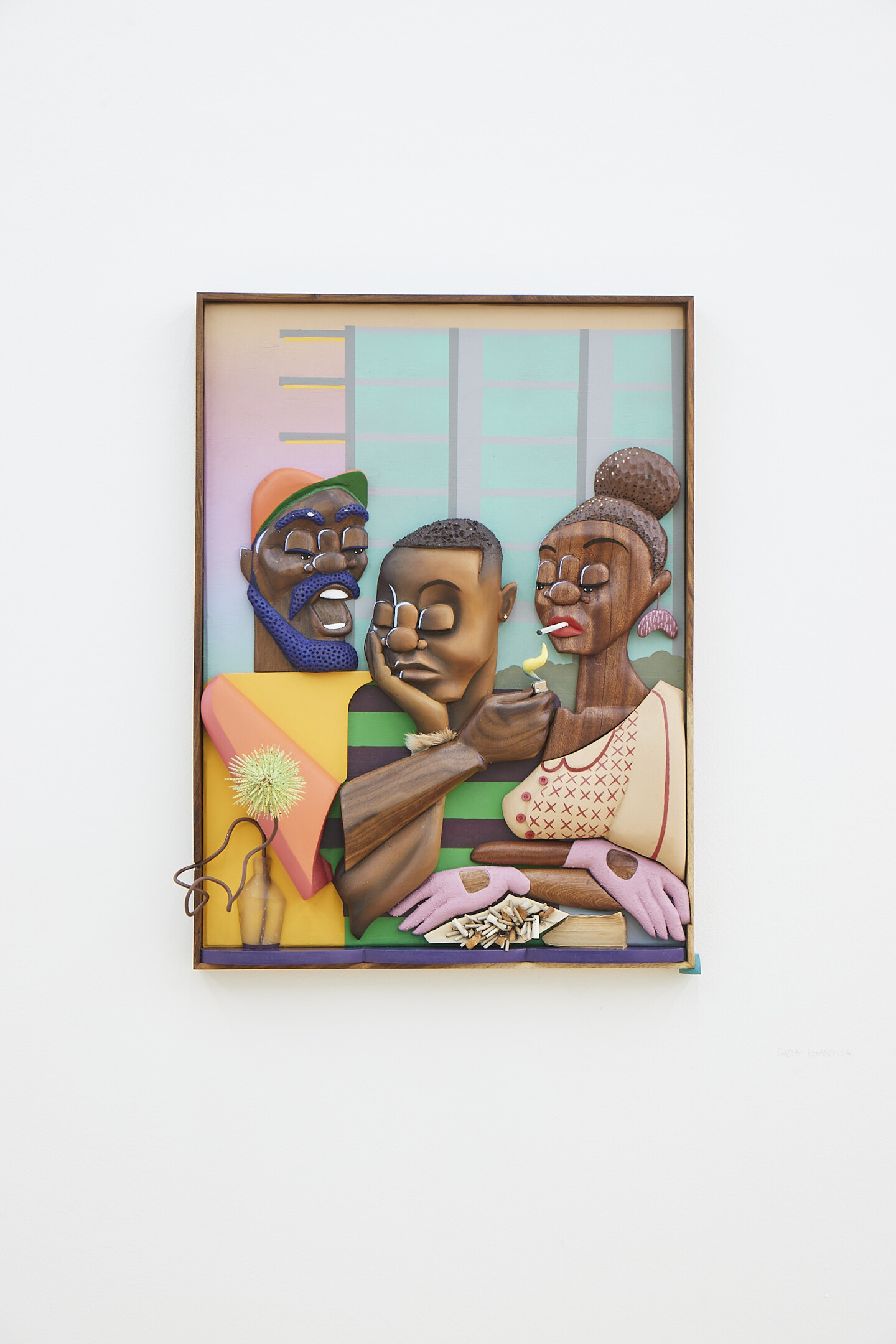
mixed media on canvas, 84 × 88 × 18 cm
TARIK KISWANSON
Tarik Kiswanson (b.1986, Halmstad), born in Sweden to Palestinian parents, Tarik Kiswanson lives and works in Paris. His work, that encompasses sculpture, writing and performance, reflects a commitment to the poetics of métissage. Through different conceptual strategies of interweaving, both in the literal and metaphoric sense, Kiswanson seeks to make visible the need to be in relation, as articulated by Edouard Glissant. His works are often activated by the presence of the viewer, all the while reflecting in turn his/her own unstable, erased or diffracted image. The artist graduated from Central Saint-Martins in London and the Beaux-Arts in Paris.

inkjet on cotton, 245 × 150 cm
NEO MATLOGA
Neo Matloga was born in 1993 in Mamaila, a small town in Limpopo province, South Africa. He currently lives and works in Amsterdam, Netherlands, where he recently completed a two-year residency at De Ateliers. Matloga works with drawing, painting and collage to make large-scale mixed media pieces on paper or canvas, depicting domestic scenes which capture memories of daily life during the artist’s childhood. These monochromatic works play with surrealism and perspective, pushing light, shadow and line to the edge of abstraction. The artist’s practice is a meditation on the healing properties of family and home, showing fragments of happiness and togetherness in the midst of struggle, and the new hope which was emerging at the time – hope for a democratic future after the end of Apartheid.
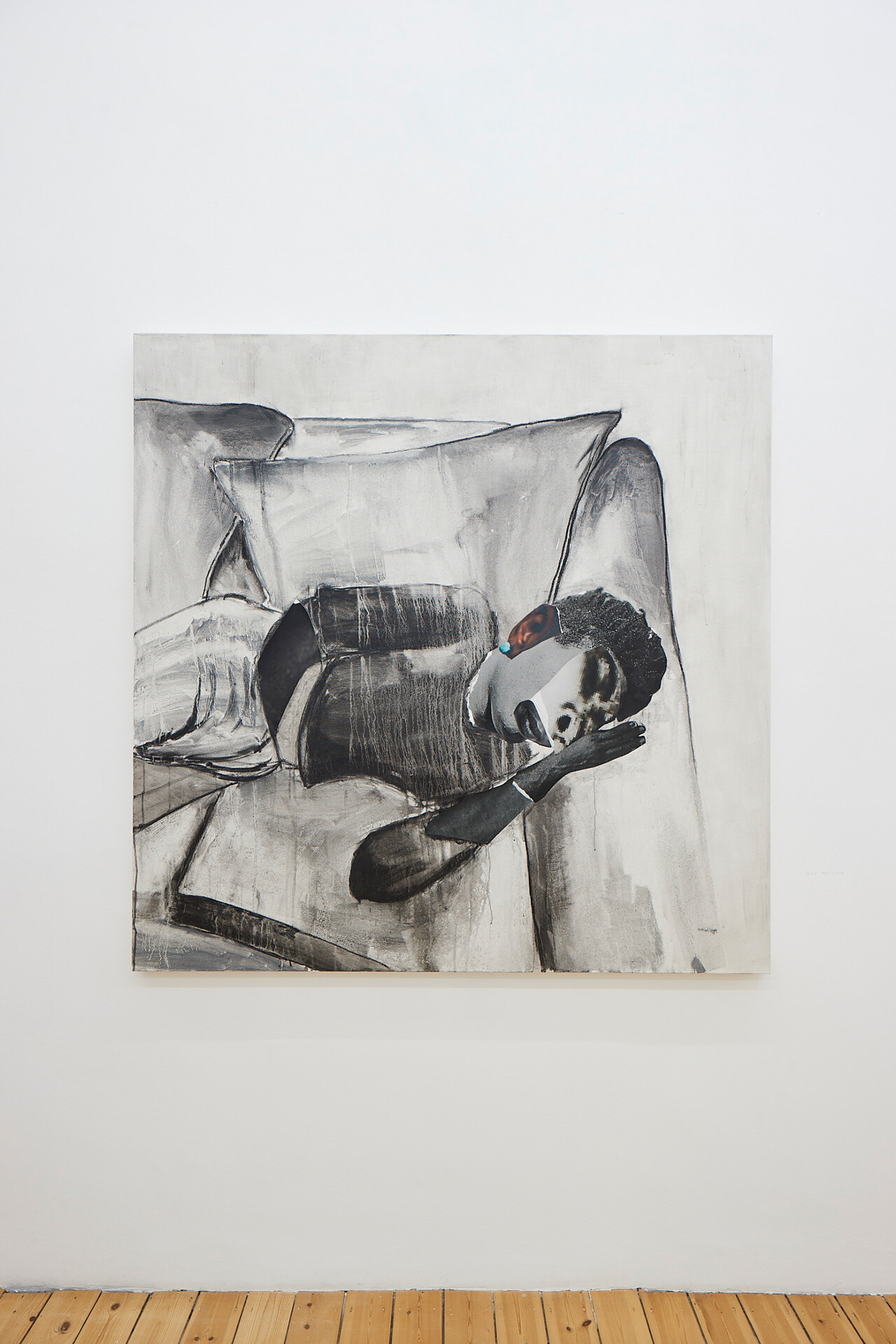
ink and pencil on paper
CASSI NAMODA
Cassi Namoda (b. 1988, Maputo, Mozambique) is a painter and performance artist who explores the intricacies of social dynamics and mixed cultural and racial identity. Capturing scenes of everyday life, from mundane moments to life-changing events, Namoda paints a vivid and nuanced portrait of postcolonial Mozambique in an increasingly globalized world. This year, Namoda was named one of Elephant Magazine's "Rising Arts Stars of 2020" and was commissioned to design the cover for the January issue of Vogue Italia. Her work is in the collection of the Pérez Art Museum, Miami. She works between Los Angeles and New York.
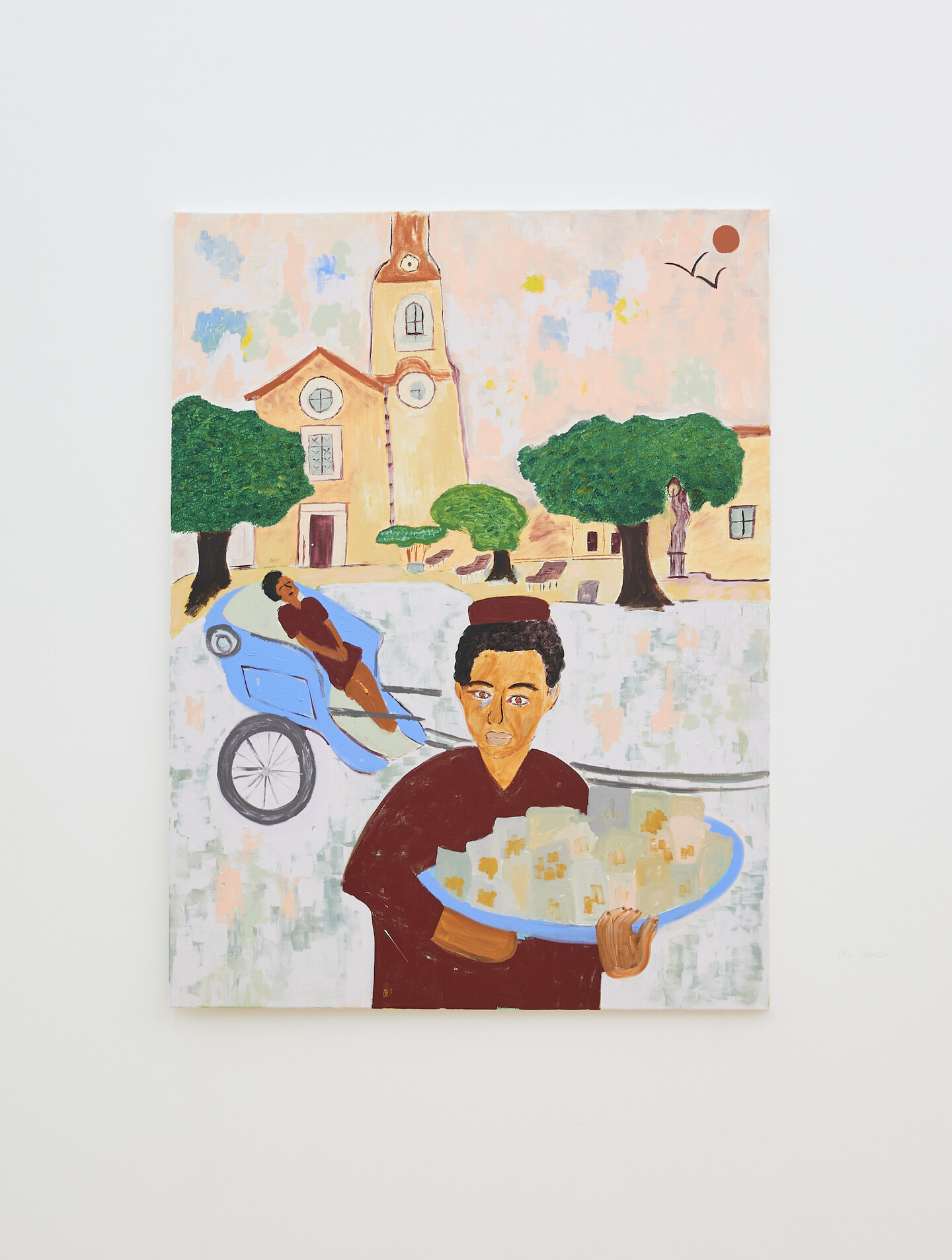
acrylic on canvas, 122 × 91.5 cm
WAEL SHAWKY
Wael Shawky (b. 1971, Alexandria, Egypt) lives and works in Alexandria and Philadelphia (USA). In 2010, he founded MASS Alexandria, Egypt, (an independent non-profit contemporary art school that provides spaces for art practices, interdisciplinary research, and critical thinking education). Shawky has received numerous awards for his work, including Honorary Citizenship of the City of Palermo (2017); Sharjah Biennial Prize (2013); Louis Vuitton Prize for Cinematic Work; Kino der Kunst, Munich (2013); Abraaj Capital Art Prize, Dubai, joint winner (2012); Ernst Schering Foundation Art Prize, Berlin (2011); Grand Prize, 25th Alexandria Biennial (2009). Alexandria Biennial (2009). In 2011 he was artist in residence at the Center for Possible Studies, Serpentine Gallery, London.

oil, graphit and ink on paper, 90 × 65.5 cm

oil, graphit and ink on paper, 90 × 65.5 cm
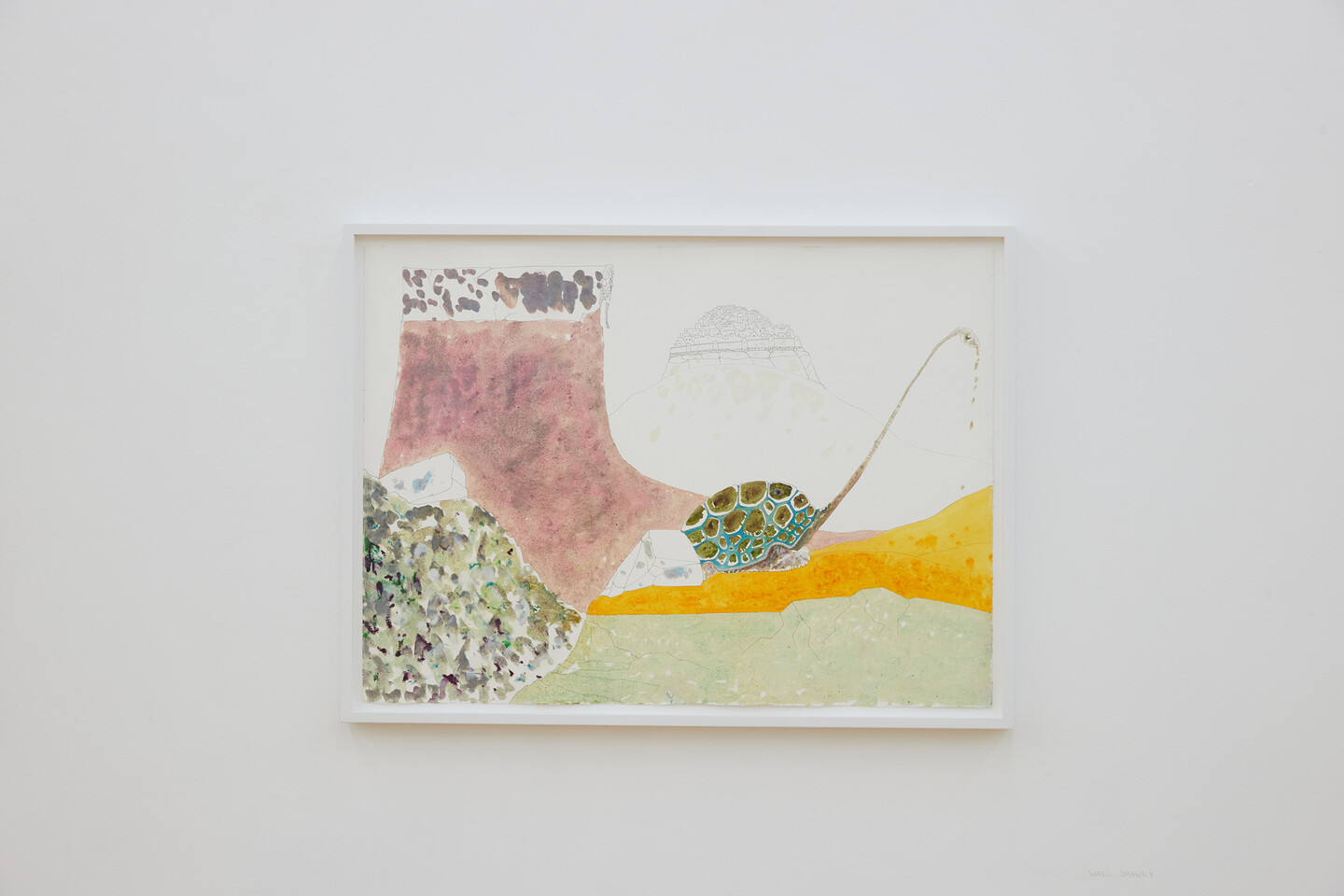
oil, graphit and ink on paper, 90 × 65.5 cm

oil, graphit and ink on paper, 90 × 65.5 cm
SUNG TIEU
Sung Tieu (b. 1987, Hai Duong, Vietnam) is a visual artist whose practice traverses a range of media, primarily installation, sound, moving image, sculpture, and photography. Her practice struggles with notions of displacement through the lens of cultural belonging and global capitalism. Tieu's work is an abstraction of her research, in which she considers the interdependent historical and contemporary constructions of power that define culture and its consumption today. Her recent exhibitions include Haus der Kunst (Munich), Royal Academy of Arts (London), Manggha Museum (Krakow), Asian Film Archive (Singapore), Piper Keys (London), and Nha San (Hanoi).
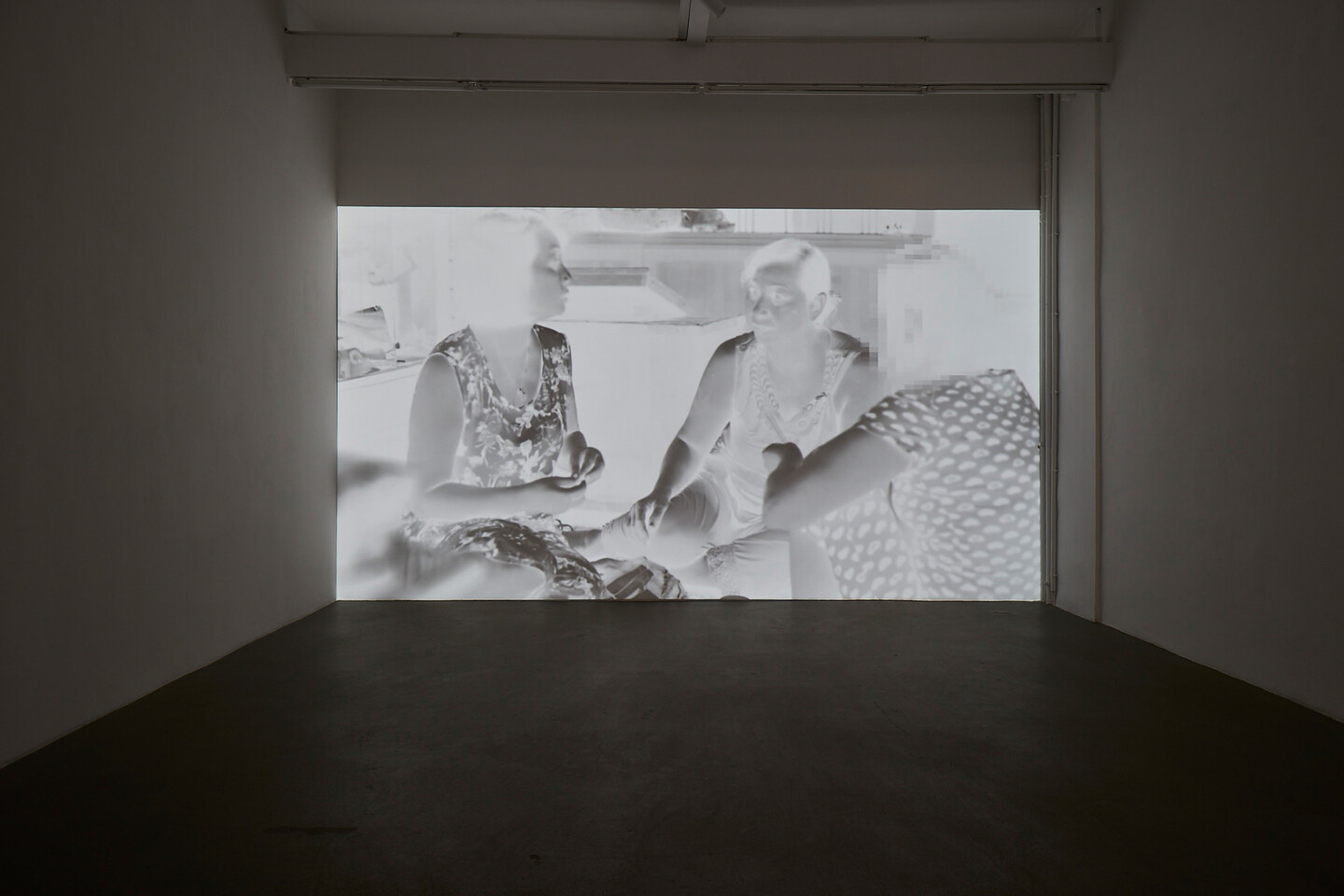
video
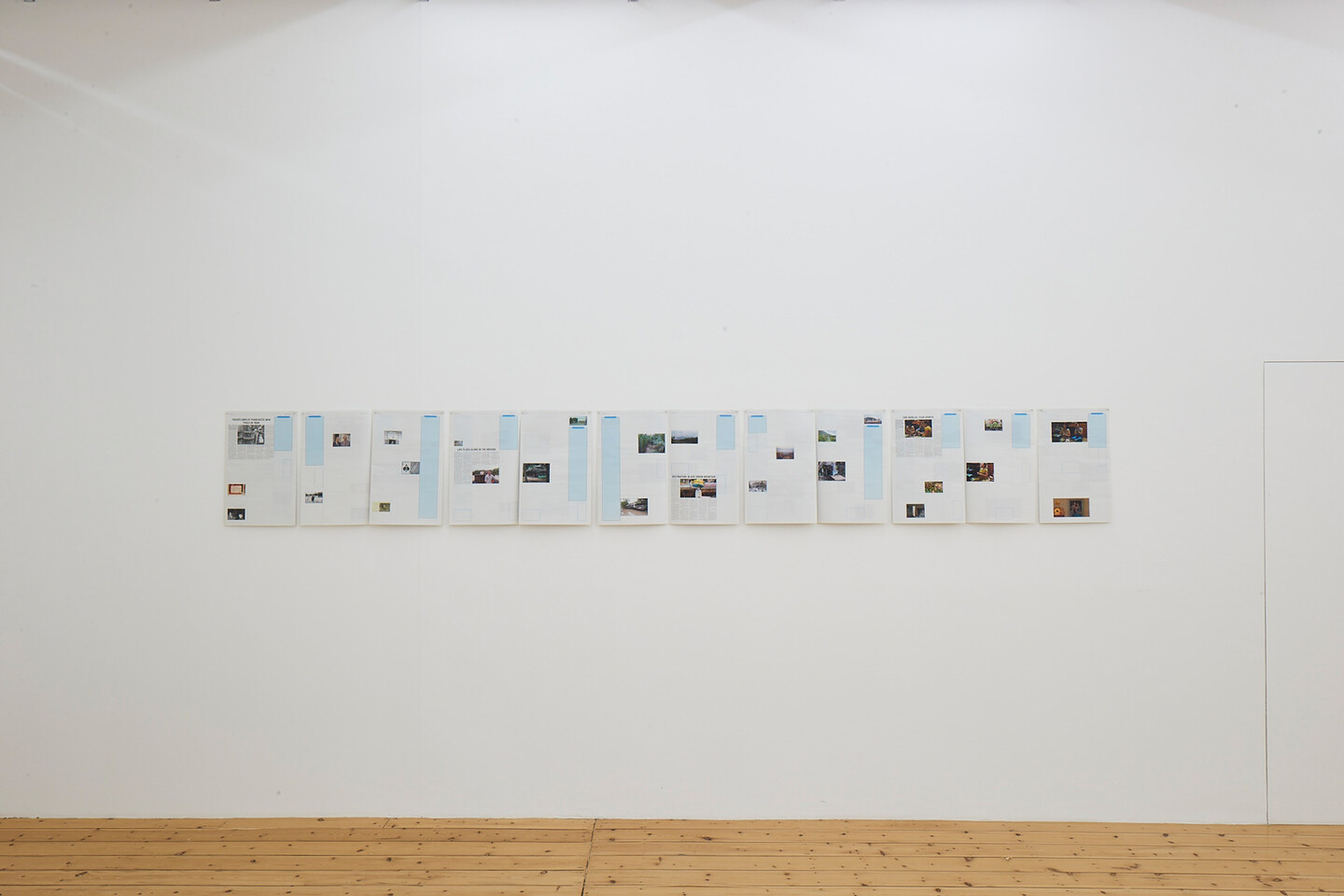
digital print on newspaper stock, 49,5 × 31 cm per single page, 49,5 × 62 cm per double page